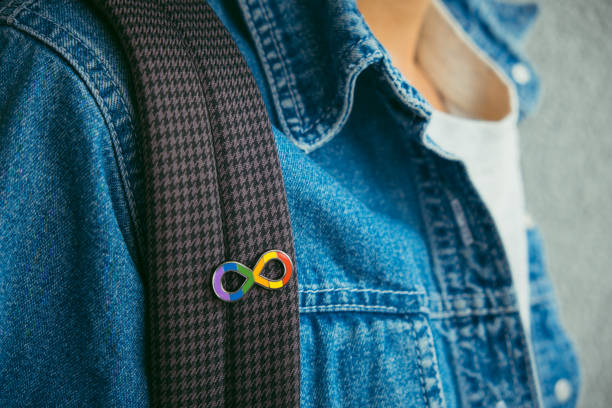Earlier in the school year, the administration closed half of the bathrooms in the school—leaving one per floor open, including in the basement and outside the cafeteria. This was done in response to discipline issues occurring in the bathrooms.
However, students feel this policy has resulted in longer lines and more crowded bathrooms, which frustrate them and force them to miss more class time. The administration, while committed to finding a solution to the bathroom problem, is stumped by how to create the ideal bathroom policy.
According to data from the bathroom sign-in app, provided by Mr. Jones, there are more than 1500 bathroom visits logged per day at South, among the fewer than 40 total stalls available to students on all three floors and in the basement. Trip lengths range from 0 to 29 minutes, when Mr. Jones said the app maxes out.
A random survey of the second-floor girls’ bathroom on April 2 and 3 alone revealed three times (around 9:30, 10:00, and 12:30) when there was a line of more than five girls waiting outside the bathroom, demonstrating the frequent inefficiency of using the bathrooms. In these cases, students have recorded that they have missed up to 10 minutes of class, because of the lines for the bathroom.
However, the administration closed one bathroom on each floor at the beginning of this school year, in order to better monitor behavior in the bathrooms—many disciplinary issues originate from the bathroom. “That is the one area of the building that is not. . . teacher supervised,” said Ms. Papadopoulos.
“A lot of times, students get into verbal exchanges” in the bathrooms, she said, and sometimes students have almost gotten into physical altercations. Additionally, “we do know that there’s a vaping epidemic,” she added, “and that always happens in the bathrooms.”
The school administration determined that it was helpful and effective to always have a teacher on-duty outside the bathroom, to provide as much supervision as possible. “If there’s a verbal or physical altercation,” she said, “we can hear it.”
Vaping, she admitted, was more difficult to keep track of. However, sometimes teachers can even smell it from outside the bathroom, and then they can “catch it.”
Though having teachers on duty is effective, there are not enough teachers in the school to cover both bathrooms—not only are they teaching for much of the day, but they have hall and lunch duties, sometimes they cover other classes, and they need a certain amount of prep periods.
Because of this, only one bathroom per floor is open in the school, in order to have all bathrooms monitored. Since half the bathrooms were closed in the fall, Ms. Papadopoulos has seen a sharp decrease in the number of discipline issues resulting from the bathroom.
Similarly, the bathrooms are now locked during passing times between classes, as well as after school (though Ms. Papadopoulos noted that the bathrooms across from the cafeteria are supposed to be open after school, because of the after school program).
Ms. Papadopoulos reiterated that these protocols were enacted to prevent misbehavior.
“If there’s an area in the building where kids are engaging in unsafe activity, it’s our responsibility to create a safer place,” she said, “and the gates have given us that opportunity.”
However, many students are not pleased with the bathroom policies, which they claim create long lines and crowded bathrooms.
The school was built to have two bathrooms on each floor, so Janahsey Pizarro ‘26 wonders why the school can’t just open both of them. As far as she can remember, no one at school has ever explained to her why half of the bathrooms are closed—it just happened.
The situation frustrates Pizarro, who dislikes having to justify to teachers that she was out of class for ten minutes because she was waiting in line for the bathroom.
Sometimes, when Pizarro goes to use the bathroom, there are multiple people crowded into a single stall, often vaping. Pizarro wishes that the teachers on duty could address this issue better. “How do you not notice? like they’re super loud. . . and smoking. . .” Pizarro thinks it is a problem that there are so many people constantly trying to occupy the bathrooms.
“It’s such a hassle to get there,” said Muriel Gibbons ‘26, who feels that she sometimes misses a lot of class time because of the long lines outside the bathrooms. “The entire floor [is] waiting [to use the bathroom],” she said.
Gibbons also recalled a time when a bathroom wasn’t even open during class. She was on the first floor and needed to go all the way to the third floor, where she waited in line to use the bathroom.
Gibbons, a multi-season athlete, dislikes that the bathrooms are closed afterschool, as well. “Going into the locker room to change is fine, but you have to wait a long time, especially if you have to use the bathroom,” she said. She used to change in the other bathrooms in the school—but now they’re locked. These limitations on bathroom use are frustrating.
Physics teacher Ms. Vaidya has bathroom duty every week. “The best thing that happened at South this year was getting locks and gates on the bathrooms,” she said.
Before the gates were implemented, people used to enter the bathrooms during passing times—when they weren’t supposed to—and it was very difficult to control their behavior. By having the locks and gates, Ms. Vaidya said that the teachers and administration are able to enforce the regulations they create, providing more order in the school.
However, while the gates are helpful in this regard, Ms. Vaidya recognizes that having one bathroom closed on each floor is not ideal for students. It would be better if there was a teacher stationed at each bathroom, she said, but she understands that there are not enough teachers to do this.
“There needs to be a plan” to help everyone, Ms. Vaidya said. She’s just not sure exactly what that is.
Ms. Papadopoulos feels the same way. Using the bathroom should be “efficient and safe at the same time,” she said. “We want to respect the fact that kids don’t want to lose ten minutes [of class]” when they use the bathroom.
The school is always looking for a better solution, she said, and the policies are a work in progress. At the end of last year, it was clear that having both bathrooms open was not a viable option, so they decided to close half of them. This year, the school is tracking bathroom data through the sign-in app designed by Mr. Jones, and Ms. Papadopoulos hopes that this data will be able to guide future decisions about the bathrooms. This could help students to be more efficient when using the bathroom, creating fewer lines.
Ms. Papadopoulos has even thought of removing the mirrors from the bathrooms to encourage students to spend less time there, a policy that has apparently been effective in other districts around the country.
However, she recognizes that students value the mirrors. “It’s still a work in progress,” she said.
“We are open to feedback,” she said. And “a lot of thought and conversation goes into any of the decisions we make on the bathrooms.”
Some students have felt confused by changes to the bathroom policies, unaware that they would take effect and unsure of their purpose. Ms. Papadopoulos said that the school has not been effective at communicating transparently about changes and updates to the bathroom policy. She believed this could be a goal moving forward.
As the bathroom policy is altered with time, student perspectives will continue to change, as well the effectiveness of the policies. Regardless, it is an issue that Ms. Papadopoulos thinks should be confronted by both students and staff, working together to come up with productive ideas and to keep the bathrooms running efficiently.
“I know it’s frustrating for you,” Ms. Papadopoulos said. “It’s frustrating for us as well.” But she still wants to work to make the bathrooms “more efficient and safe.”







